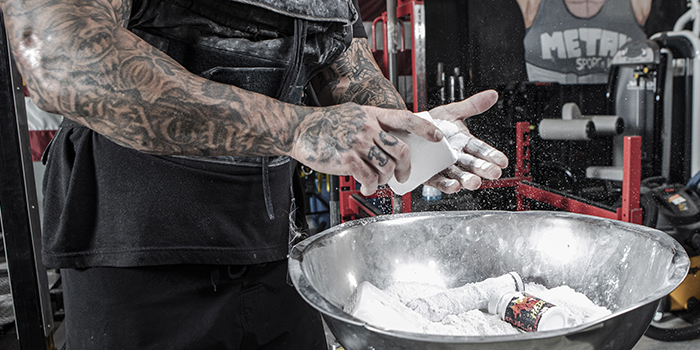
It's that time of year again when summer body programs and marketing madness begin.
With the average American trying 120+ diets and workout plans in their lifetime, you can see why such subject lines get society hooked. (1)
Unfortunately, these marketing ploys and strategies often lead to more backfire than good or simply don't work at all and leave many further from where they initially began.
What gives?
Where do these strategies go wrong?
Let's look at three of the biggest mistakes I see with people trying to get their summer body in tip-top shape.
1. Extended Caloric Restriction
There is no doubt that you have to eat less than you burn to lose weight and body fat. However, the common error many make is simply thinking you should and can do it for extended periods.
Dieting is a stress to the human body, and while it's entirely possible to do (when healthy), too much of it can come with its own set of problems.
Have you ever heard of the term metabolic compensation or resistance? The two are very similar in that they involve the slowdown of your metabolic rate.
RECENT: 3 Intensity Techniques for MORE Muscle in LESS Time
Metabolic compensation is the body's natural response to dieting, fat loss, and periods of lower calorie intake. As you lose weight and lower calories, your body adapts to having less mass to carry around; while also becoming more efficient at using less energy due to decreased food availability.
Again, this is natural. It's a survival mechanism to help keep us from starving and wasting away.
Metabolic resistance is similar in that it also involves those same mechanisms of dieting and calorie deficits but is also exacerbated by other factors, including excess cortisol production and stress, poor sleep and too much exercise, nutrient deficiencies, or things like poor hormone production, autoimmune diseases, metabolic diseases like diabetes, PCOS, and other unknown issues.
Metabolic compensation is normal when losing fat. Metabolic resistance is what we want to minimize at all costs.
When you cut calories for extended periods, these bad boys can be more harmful than good.
My Advice
If you plan to cut for a trip or summer, don't expect miracles in a short time frame unless you are already relatively lean (less than 15% body fat for males or 20% for females).
Also, plan to keep your strategy in line with your annual goal. If you have been cutting 70% of the year, eating like a bird, and only coming off a month with maintenance calories, don't expect magic results. Your body is smart and needs to be treated like so if you've been dieting excessively.
2. Adding Too Much Cardio
We know movement is a good thing, and cardiovascular work burns calories, but many forget that it comes with added stress to the body. The extra HIIT workouts, spin classes, and boot camps are not necessary or conducive to many lifestyles unless you are a professional athlete with an in-home chef and the ability to recover without outside obligations.
As a thing to remember, mental fatigue is a real thing. Studies have shown that the brain plays a significant role in regulating endurance performance and is supported primarily by human studies. Many of us have jobs, kids, and daily tasks that take priority. Adding extra bouts of higher-intensity cardiovascular work can send your cortisol levels soaring. Now, this is not a bad thing. Still, suppose you are doing it multiple times a day and adding in the stress of life. These extra cardio sessions you are doing could potentially make you less resistant to insulin or mess with your adrenals to the point of unwanted stages of exhaustion.
It's why many bodybuilders go through cycles of poor sleep, mood swings, depression, and fatigue. While most can tolerate some extra cardio work, many have it in their heads that you must also diet. Going after this notion is a recipe for disaster. Instead, we need MORE sleep to recover. Sleep is our number one ability to sustain performance and physique. Why would eating LESS and training MORE be the route if you want to get the body you want?
Remember, the overall goal of health is to keep our body in a parasympathetic state longer than in a sympathetic state.
The parasympathetic nervous system (PNS) is the key regulator of rest, recovery, and regeneration. Common metrics associated with the PNS are lowered respiratory rate, heart rate, blood pressure and pupil dilation among many more, and an increased localized blood floor into systemic function of the gut and internal organs.
On the other side of the central nervous system spectrum we have the sympathetic response, which has become widely known as the "fight of flight" response where the body prepares to perform against threat or challenge. The physiological response during a sympathetically driven threat is polar opposite of the PNS, where the respiratory rate, heart rate, blood pressure all increase, while the pupils dilate and blood flow is syphoned to the active locomotive muscular structures to aid in movement efficiency.
We want to be able to balance both optimally to keep our cognitive function in check.
Outside of the foundational factors or lifestyle stressors and nutritional practices, smart programming helps by optimizing recoverability. Simply put, if your training program drive you down into the ground beyond your ability to repair with volumes, intensities, frequencies or methodology that is a mismatch for you, your goals and your needs, that is a program is a recipe for long term disaster.
Instead of always thinking about adding cardio, try taking LESS of your plate. You might find this easier and less daunting to do. If you are one for punishment and like the thrill of 2 HIIT sessions a day instead of eating single ingredient foods, then more power to you.
My Advice
Stick to lifting weights. If you are in a deficit, reduce your volume slightly and keep your sessions under 45 minutes to avoid excess stress on the body. Think full-body workouts two to three days a week and cycle in your favorite cardio one to two days a week where one is more anaerobic like sprints and the other more steady-state or even GPP work.
Check out A Busy Man's Guide to Strength Training for ideas.
3. Workout Selection
I don't know what it is about the summer body that has everyone amped up to automatically think workouts need to be dialed in with higher heart rate zones, supersets, and circuits.
While these can be a great way to save time and get a solid workout, they are not required for the summer body. Remember, the amount of lean muscle you have adds to the overall appearance most of you are looking for.
Therefore, progressive overload, mechanical tension, and muscle hypertrophy are what you want. No one is arguing that burning more calories can help you stay in a deficit to drop weight, but so can taking less off your plate and focusing on getting quality work sets to keep muscle on your frame.
My Advice
If you have a solid four to six weeks before your event or vacation, dedicate it to a split that fits your lifestyle. If you have the time, my favorite is a push/pull/legs. Everyone thinks abs are the focal point of a fit body, but personally, seeing guys with jacked traps and a built back is more impressive and a signifier of fit.
Keep your exercise list to three to four per workout and two to three good working sets per exercise. If you want to add a fourth day, go for vanity and target lagging muscle groups or things like arms and abs.
Remember, the quest to get lean and rocking that summer body is a lot more than a workout and meal plan. If you are not healthy going into your summer "shred," then beware of a tough road ahead.
References
- Anderer, John, et al. "Food Fads: The Average Adult Will Try 126 Different Diets during Their Life!" Study Finds, John Anderer, 15 Jan. 2020, https://www.studyfinds.org/food-fads-the-average-adult-will-try-126-different-diets-during-their-life/.
- Nybo L. Hyperthermia and fatigue. J Appl Physiol 104: 871–878, 2008.
Mike Over is a NASM master trainer and owner of Over-Achieve Fitness in Pennsylvania. He works with hundreds of everyday gym-goers and athletes of all levels.










